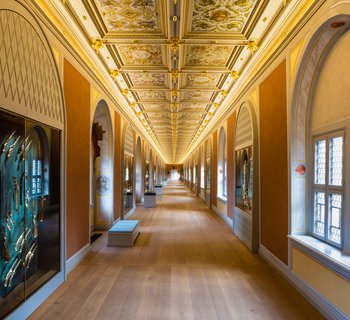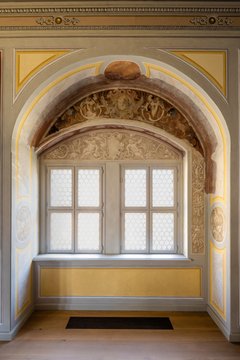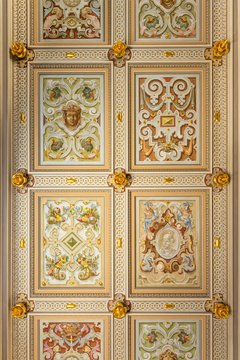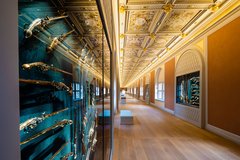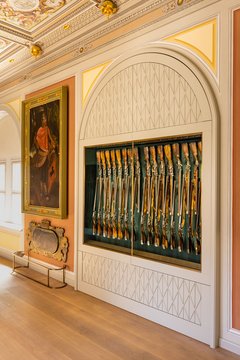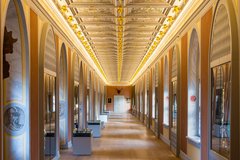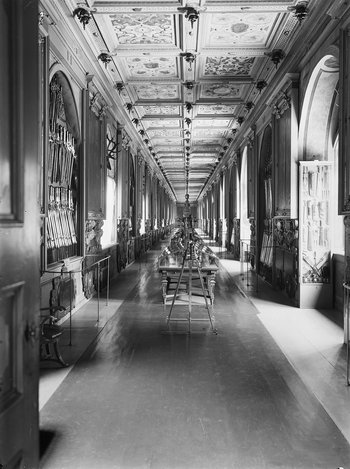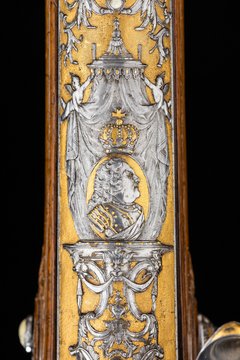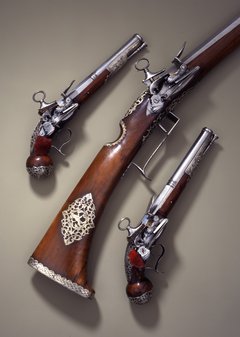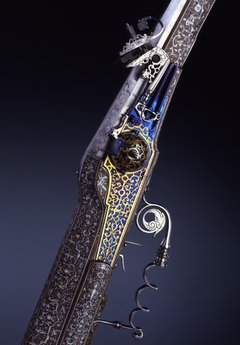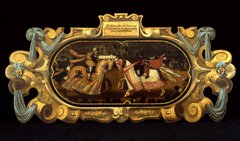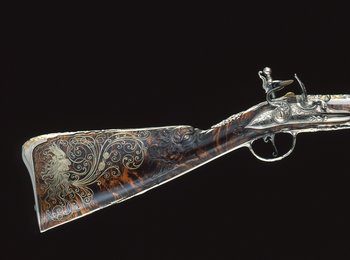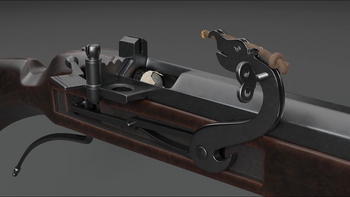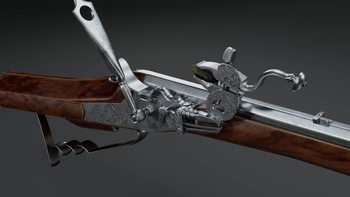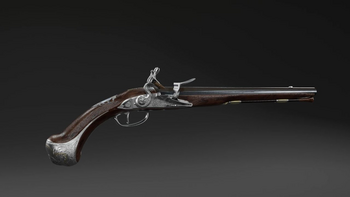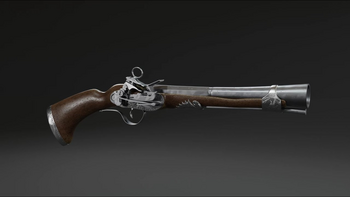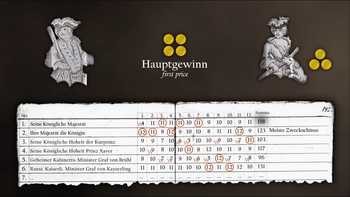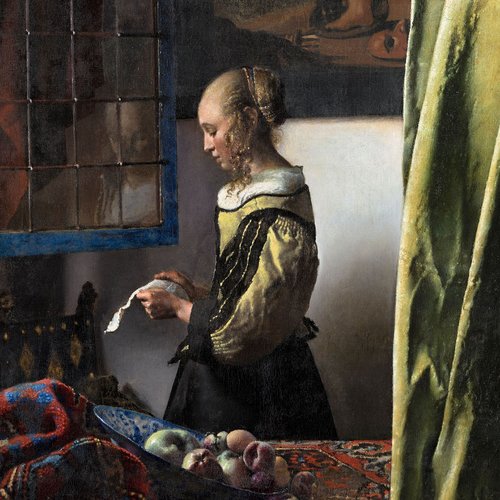„Das königliche Leibgewehr auf der Stallgalerie“
“The personal arms of the king in the stable gallery” presented long guns and pistols according to type and geographical origin. The guns were kept and displayed in 18 cabinets placed in every second recessed arch. They constituted a representative collection but were also in use. The king and his court regularly used the ca. 1800 firearms for hunting and target-shooting. During the following two centuries, hundreds of firearms, pieces of hunting equipment, and crossbows were added to the collection.
The building and the wall paintings were heavily damaged in the bombing of 1945, but the firearms had been evacuated in time. They were taken to the Soviet Union after the war and returned almost in full in 1958/59.
